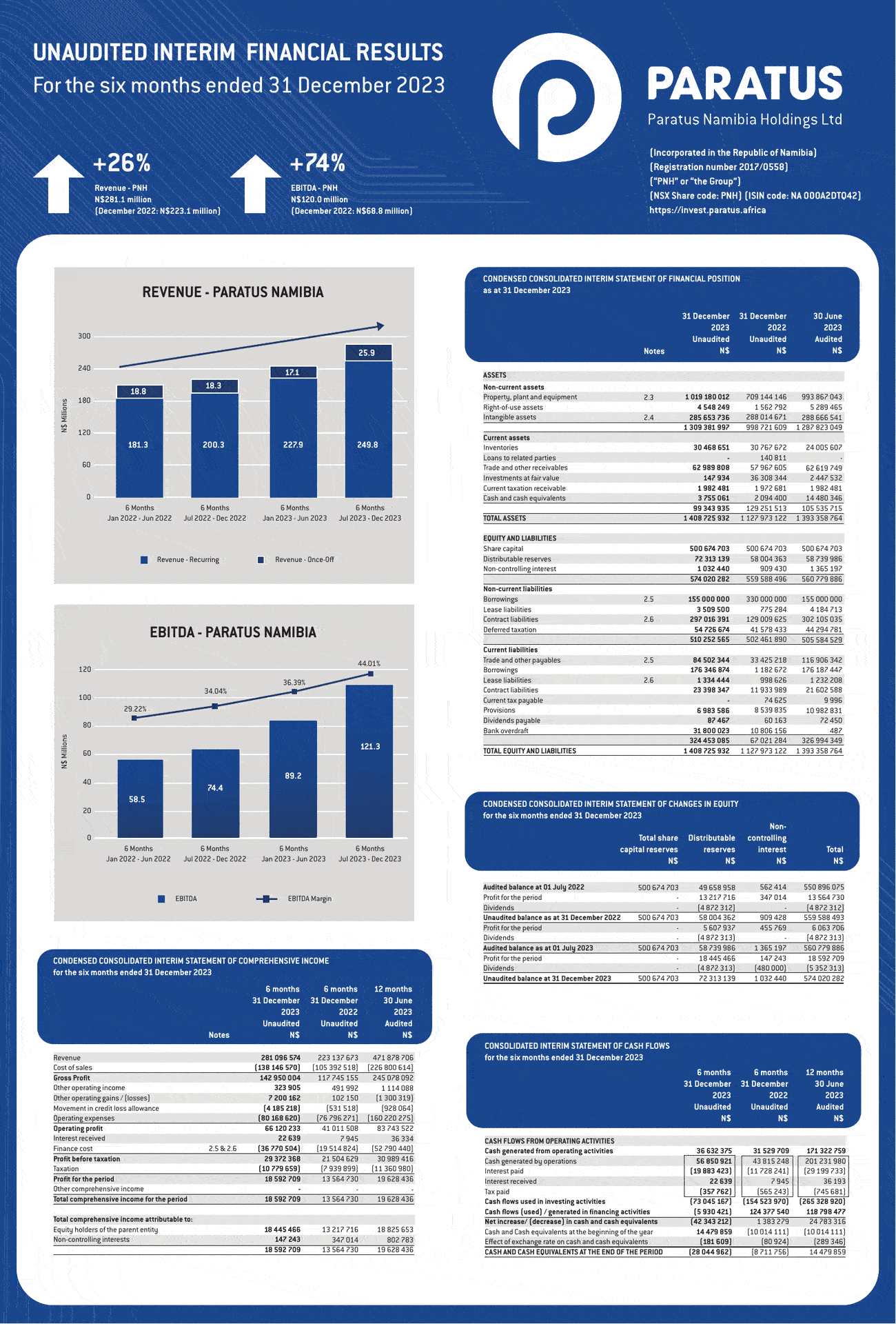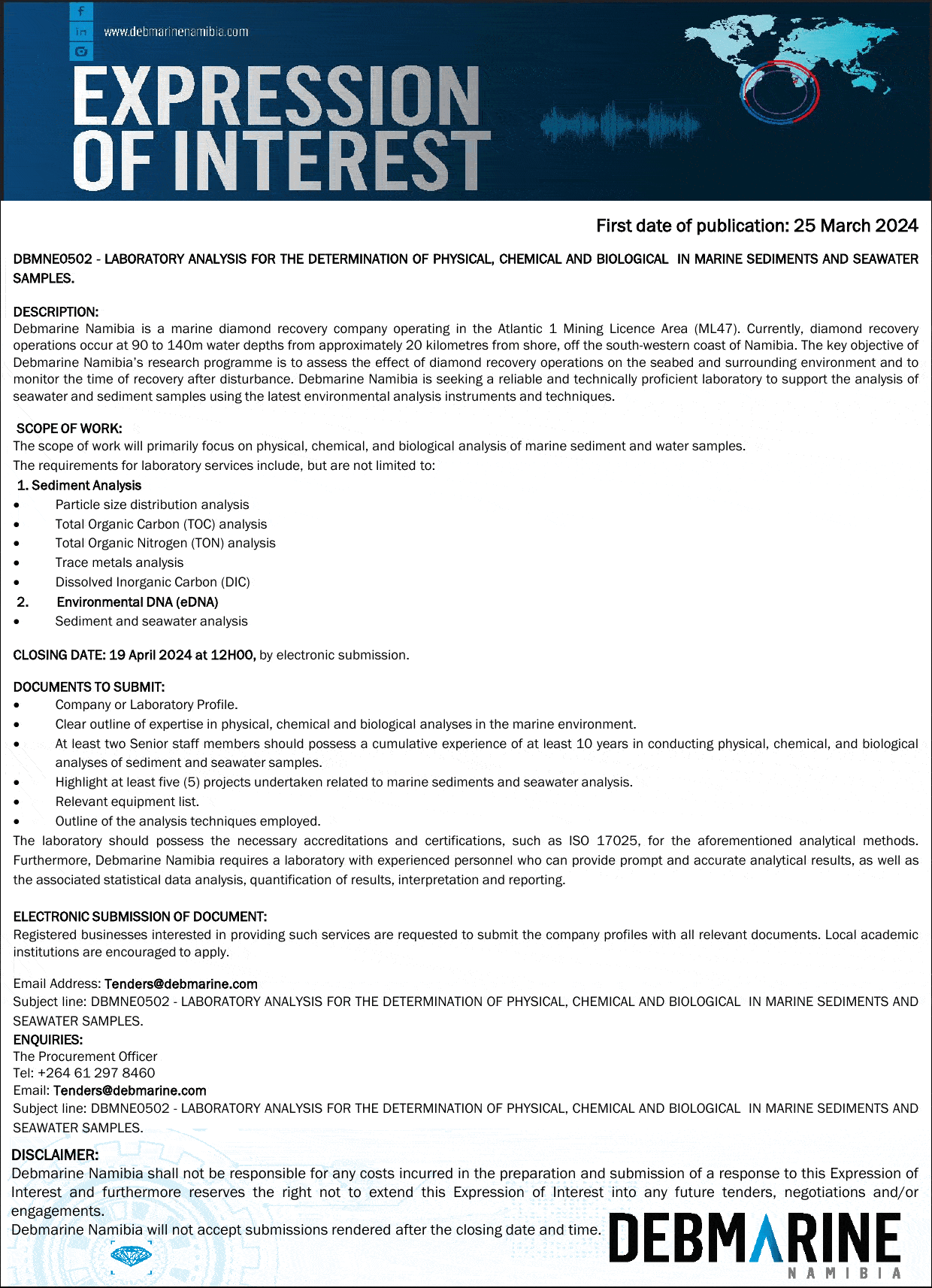
Current account records widest deficit since 2016

The current account deteriorated to a deficit of N$268 million in the first quarter of 2021 compared with a surplus of N$10.6 million during the same period last year, according to the Bank of
Namibia’s latest Quarterly Bulletin.
This is the widest current account deficit since the fourth quarter of 2016, mainly due to a larger goods trade deficit as well as increased net outflows of non goods transactions.
The good trade deficit widened to N$553 million in the first quarter of 2021 compared with a deficit of N$357 million during the same period last year. Export earnings were knocked by lower manufacturing (-17%), diamond (-34%) and ‘other commodity’ (-34%) export receipts.
While exports of uranium and livestock rose moderately on an annual basis they were down sharply on a quarterly basis. On the other side of the goods trade ledger, the import bill increased mainly due to higher imports of consumer goods (+7%), chemical products (+21) and ‘other imports’ (+20).
According to PSG Wealth analyst Shelly Louw, the current account deficit is set to deteriorate significantly in the short to medium term.
“Due to uncleared stockpiles, Namibia’s main commodity exports diamonds and uranium are not benefiting from the general recovery in global demand to the same extent that other commodities have,” Louw said.
In previous quarters a smaller import bill thanks to weak demand and lower fuel prices as well as higher Sacu revenues largely neutralised sharp declines in goods exports and services credits. The recovery in goods imports in the first quarter of 2021 has now exposed the continued weakness in exports and services.
Looking at non goods trade, Namibia recorded a services deficit of N$73 million during the first quarter of 2021 compared with a surplus of N$18 million recorded a year earlier. The subcategories that declined the most were travel services (a proxy for foreign tourism earnings) and transport services, reflecting global travel restrictions.
Meanwhile, net primary income outflows of N$24.1 million were recorded in the first quarter compared with net inflows of N$60.1 million last year, largely due to increased dividends paid to foreigners. Lastly, the secondary income (current transfers) account recorded a surplus of N$383 million, up from N$289 million last year, mainly due to an increase of 21% in Southern African Customs Union (SACU) receipts.
Louw added that Sacu revenues, which have buoyed the current account balance over the past year, will (starting from the second quarter) slump over the next two years, due to the recent underperformance of South African non fuel goods imports, which affects Sacu pool payments the most.
“The import bill will also face upward pressure due to the rise in the benchmark oil price and need for increased health expenditures to deal with the ongoing pandemic Furthermore, there are still two Eurobond coupon payments outstanding in 2021 which will put pressure on the primary income account,” Louw added.















































